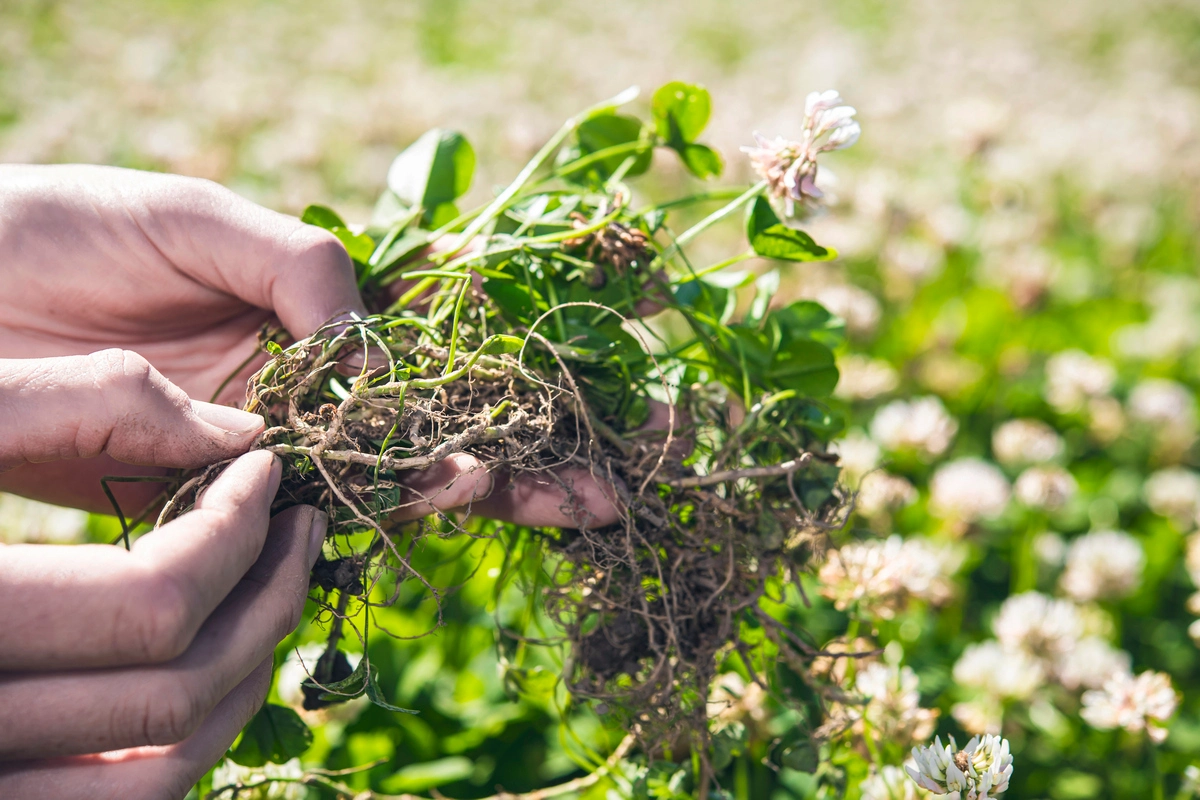Maintain clover content to optimise your milk production: Good pasture management remains key to achieving optimal production levels in the New Zealand dairy sector. In particular, legumes like white and red clovers are important companion species to grasses.
That’s because clovers offer a number of feed advantages – namely a higher nutritional value, and the ability to fix atmospheric nitrogen (N), which helps to keep your entire pasture well nourished.
This is why Germinal has developed a range of clovers for New Zealand conditions, selectively bred for their resilience – both to climate extremes and grazing pressures.
DoubleRoot clover: A world-first hybrid cultivar
A standout example is DoubleRoot – a unique hybrid of white clover and Caucasian clover that tolerates cold and dry conditions.
DoubleRoot has the unique ability to produce above-ground stolons and below-ground rhizomes, powering the pasture’s capacity to fix nitrogen naturally from the atmosphere.
Overall, this improves climate resilience and increases the availability of nitrogen for pasture growth and livestock production. DoubleRoot also:
- Produces nitrogen for itself while feeding companion grasses.
- Reduces the need for artificial nitrogen fertiliser once established.
- Helps mitigate harmful leaching of nitrates into waterways.
- Reduces volatilisation of potent greenhouse gas nitrogen oxide into the atmosphere.

How clover works to improve your pasture
Clover delivers the most value when it exists at an optimal level in a lactating cow’s diet. Consequently, the industry has invested heavily in researching the optimal percentage of clover in dairy pasture.
In fact, the NZ Grassland Association published findings in the mid-1990s that showed milk production increased 22% when grazing pastures with 25% clover content.
Today, with our production systems, the optimal clover percentage for animal productivity benefits is 20-30 % and approximately 30% for DM yield performance. So, maintaining a pasture clover content of around 30% in your paddock is ideal for achieving an optimal milk yield.
Clovers build pasture protein levels
It’s actually the protein content, measured as crude protein, that makes clovers so important for milk production. Dairy cows use this protein as a source of fuel for their metabolic functions – for growth, reproduction and lactation.
On their own, cows cannot store protein and rely on a constant supply of protein from their diet. So, maintaining your pasture levels at about 30% clover keeps a constant supply to dairy cows over the dairy season.
Growing clover cultivars
Clovers are typically summer active with an optimal growing temperature 5°C higher than perennial ryegrass. This results in a higher feed quality in late spring when grass quality is declining as it goes to seed.
So, you’ll find that selecting clovers that are more resilient to extremes of climate will help you maintain pasture growth throughout the milking season, enabling you to meet stock requirements over summer and maximise your farm operating profits over winter.

Start managing your pasture to maintain clover content
Clover doesn’t like to be shaded. Therefore, managing competition from grasses is critical. That requires balancing the correct stocking rate, applying good grazing management, and maintaining adequate weed control across the seasons.
So, make sure you manage grazing appropriately in both autumn and spring – the two key growth seasons. Also, ensure light is reaching the base of the pasture and helping to promote clover growth.
Coming into the autumn dairy paddock rotation, completing a quality feed budget will help identify any feed shortages on the horizon. With the shortening days, leaving a consistent longer post-grazing pasture residual behind helps stimulate growth.
Industry feed budgeting resources
There are some great feed budgeting guides and tools freely available from two pastoral farming industry bodies: Beef and Lamb NZ; and Dairy NZ. Simply click on the links above to find the latest industry technical guides, online budgeting tools and templates.
Want to find out more?
Simply fill in the form below and we’ll be happy to respond to your inquiries directly.
